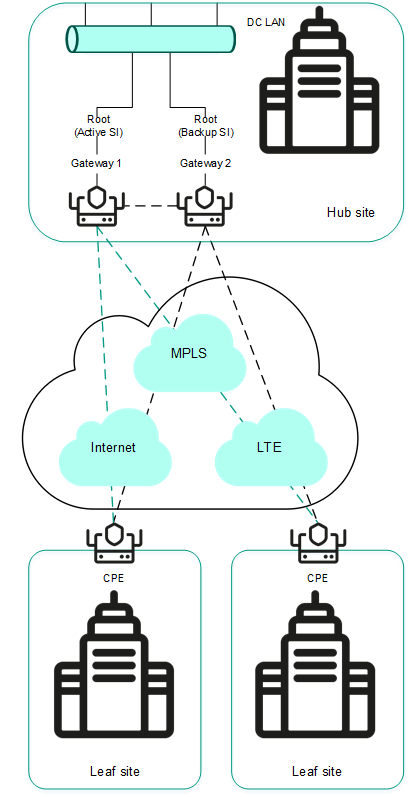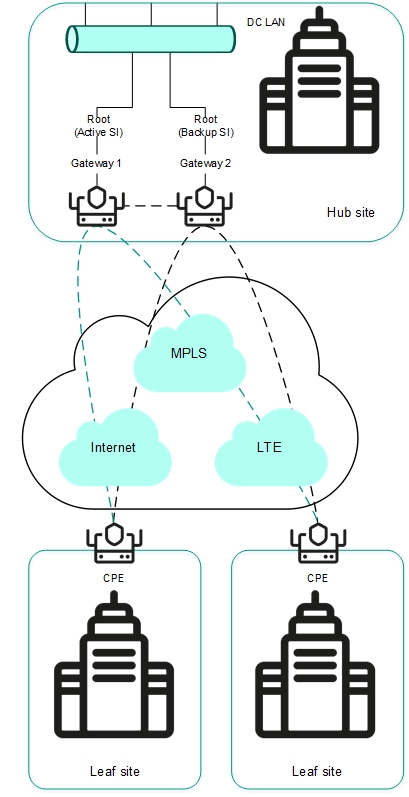Contents
About the Hub-and-Spoke topology
In a Hub-and-Spoke topology, the hub site is connected to multiple spoke sites to exchange traffic. This topology is the most common for SD-WAN network design because it simplifies network management and provides a higher level of security by routing traffic through the hub site where traffic analysis and categorization is performed. The Hub-and-Spoke topology also enables more efficient use of bandwidth by optimizing and prioritizing traffic at the hub site.
To build a Hub-and-Spoke topology, you need to assign the SD-WAN gateway and standard CPE roles to CPE devices. In this case, SD-WAN gateways establish links with other SD-WAN gateways and standard CPE devices, while standard CPE devices establish links only with SD-WAN gateways.
You can use quality of service to limit bandwidth for CPE devices or traffic classes.
Examples of Hub-and-Spoke topologies:
- Hub-and-Spoke topology without connection between spoke sites.
- Hub-and-Spoke topology with connection between spoke sites through the hub site.

